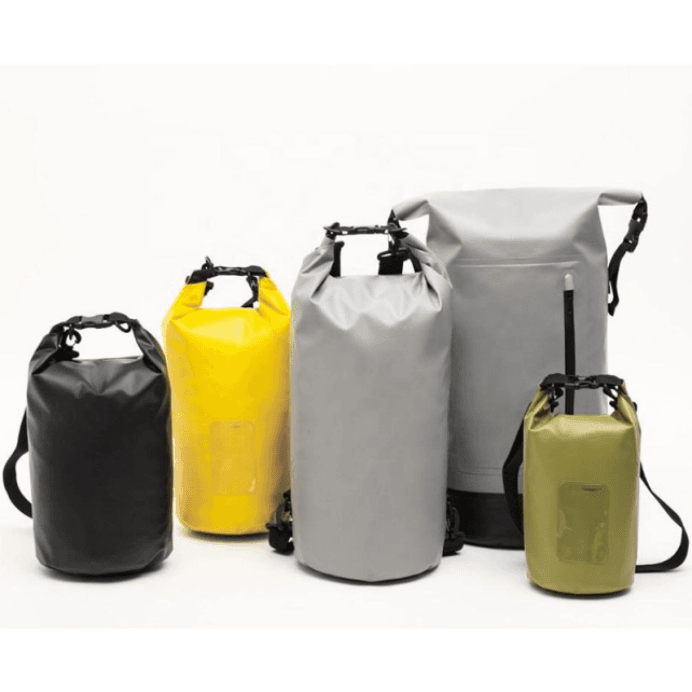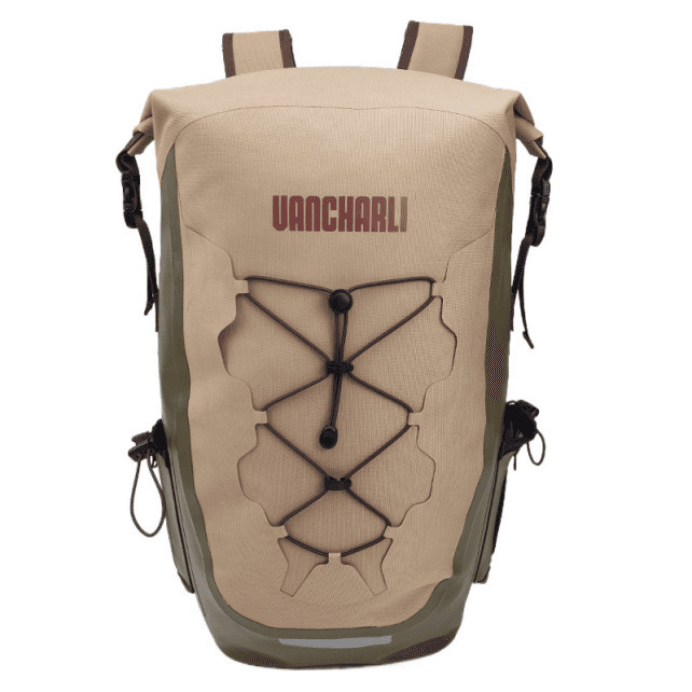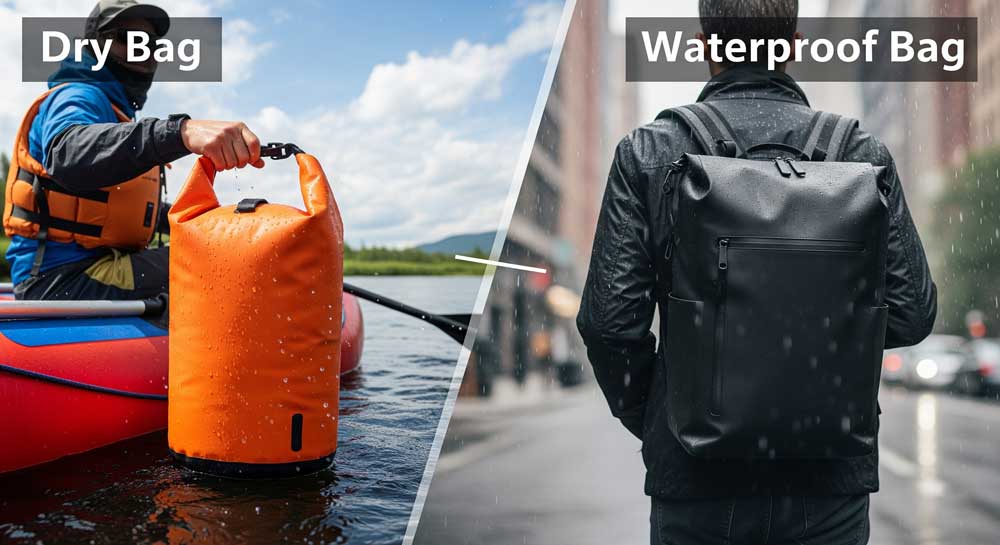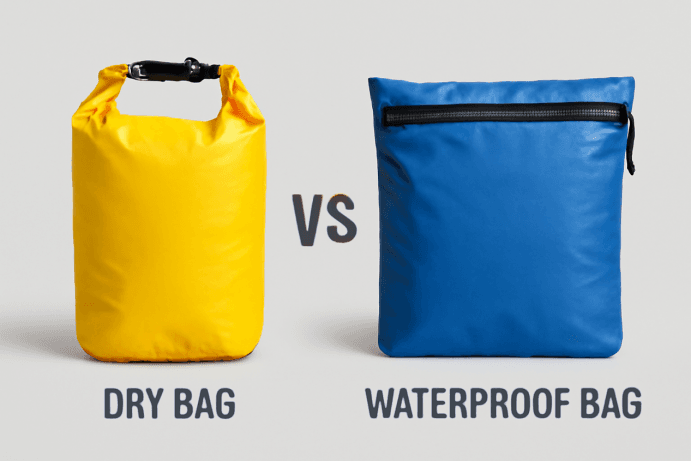What Sets a Dry Bag Apart from a Waterproof Bag

When selecting a dry bag and waterproof bag, it’s important to understand the differences between them. A dry bag is designed to keep water out, even when fully submerged, while a waterproof bag is intended to protect items from splashes or light rain only. Each type of bag is best suited for specific activities. If you plan to kayak, hike, or travel in rainy conditions, knowing how a dry bag and waterproof bag function will help you make an informed choice.
Key Takeaways
A dry bag keeps water out, even underwater. It’s great for kayaking or camping trips.
Waterproof bags block splashes and light rain. They work well for daily use or short outdoor trips.
Use a dry bag for lots of water and a waterproof bag for small water exposure. Both keep your stuff safe.
Look at the materials and features of each bag. Pick one that fits your activities and lasts a long time.
Choose the right size bag for what you need to carry. This helps keep your things neat and safe.
Dry Bag: Features and Uses

What Is a Dry Bag?
A dry bag is a special waterproof bag that keeps things dry. It works even if it gets wet or goes underwater. People often use these bags for kayaking, rafting, or camping trips. Unlike a waterproof bag, which only protects from light rain or splashes, a dry bag blocks water completely. This makes it great for keeping items like electronics, clothes, and food safe from water.
Key Features of Dry Bags
Dry bags have unique features that make them strong and waterproof. Here are some important ones:
Roll-Top Closure: The top rolls down and buckles shut. This keeps water out.
Durable Materials: They are made from tough fabrics like PVC or TPU. These materials resist tears and last long.
Welded Seams: Instead of sewing, seams are welded together. This stops leaks.
Buoyancy: Many dry bags float if sealed right. This helps if they fall in water.
Variety of Sizes: You can find small ones for phones or big ones for camping gear.
Common Materials in Dry Bags
These features make dry bags perfect for water activities or keeping things dry in wet places.
The materials used in dry bags are important for how well they work. Here are some common ones:
| Material | Description |
| Marine-Grade PVC | Strong and waterproof, it resists scratches and punctures. |
| TPU (Thermoplastic Polyurethane) | Lightweight and flexible, but still tough and waterproof. |
| High-Tenacity Nylon | Coated with waterproof layers, it’s strong and easy to carry. |
These materials help dry bags handle tough conditions, like rocky rivers or heavy rain. For example, PVC is great for extreme water sports, while TPU is better for lighter, everyday use.
Tip: Pick a dry bag material based on your activity. Use PVC for rough adventures. Choose TPU or nylon for lighter tasks.
Explore more about materials in our Custom Fabrics
Best Use Cases for Dry Bags
Dry bags are incredibly versatile and can protect your belongings in many situations. Whether you’re an outdoor enthusiast or just preparing for unexpected weather, these bags can be a lifesaver. Here are some of the best scenarios where a dry bag shines:
1.Water Sports Adventures
If you enjoy kayaking, canoeing, or paddleboarding, a dry bag is essential. It keeps your gear safe even if it falls into the water. You can store items like phones, wallets, or snacks without worrying about them getting wet.
2.Camping and Hiking Trips
When you’re out in nature, sudden rain can ruin your supplies. A dry bag protects your clothes, sleeping bag, and food from moisture. It also helps keep your gear organized and easy to carry.
3.Boating and Fishing
Boats often have wet surfaces, and waves can splash over the sides. A dry bag ensures your valuables stay dry. It’s also useful for storing bait, tools, or extra clothes during fishing trips.
4.Beach Days
Sand and water can damage your belongings at the beach. A dry bag keeps your phone, camera, and towels safe. Many dry bags also float, so you won’t lose them in the water.
5.Travel in Rainy Weather
If you’re traveling to a place with heavy rain, a dry bag is a smart choice. It protects your electronics, documents, and clothes from getting soaked. Unlike a waterproof bag, it offers full protection even in extreme conditions.
Pro Tip: Always choose the right size for your activity. A small dry bag works well for personal items, while larger ones are better for group gear or extended trips.
By understanding the differences between a dry bag and waterproof bag, you can decide which one fits your needs. Dry bags are perfect for activities where full water protection is crucial.
Waterproof Bag: Features and Uses

What Is a Waterproof Bag?
A waterproof bag keeps your things safe from water. It is different from a dry bag. A dry bag can handle being underwater. A waterproof bag protects against splashes, rain, or quick water contact. These bags are great for daily use. You can use them for commuting in rain or short outdoor trips. They are easy to carry and protect well, making them popular for casual users.
Note: Not all waterproof bags are the same. Some only handle splashes, while others protect in heavy rain or short dips. Always check the bag’s details to match your needs.
Key Features of Waterproof Bags
Waterproof bags have special features that make them useful and strong. Here are some key ones:
Seam Construction: Many have welded seams made with radio frequency welding. This makes the bag fully waterproof. Welded seams are better than sewn seams, which may leak over time.
Material Strength: These bags use tough materials like PVC or strong nylon. These fabrics resist damage and last long, even outdoors.
Waterproof Ratings: Some bags have a Hydrostatic Head (HH) rating. This shows how much water pressure they can handle. Higher ratings mean better protection.
Design Versatility: These bags are lightweight and compact. They come in many sizes and colors for different needs.
Many waterproof bags use RPET fabrics certified by the Global Recycled Standard (GRS)
Tip: Pick a bag with welded seams for better waterproofing. It’s great for kayaking or hiking in wet weather.
Common Materials in Waterproof Bags
The materials in waterproof bags decide how well they work and last. Here are some common ones:
| Material | Description |
| PVC (Polyvinyl Chloride) | Strong and waterproof, it resists scratches and tears. Great for outdoor use. |
| High-Denier Nylon | Light but strong, often coated with waterproof layers for extra safety. |
| TPU (Thermoplastic Polyurethane) | Flexible and light, offering a mix of strength and easy carrying. |
Waterproof bags are tested to ensure they work well. For example, some are submerged in water for hours to check for leaks. These tests check zippers, seams, and material strength. Bags with double-welded seams usually perform best. They give long-lasting protection from water.
Pro Tip: For heavy rain or wet places, choose PVC or high-denier nylon bags. These materials are tough and very waterproof.
Testing includes seam sealing, zipper durability, and IP ratings. Learn more about waterproof testing from the IEC IP Ratings
Best Use Cases for Waterproof Bags
Waterproof bags are useful for many activities and daily tasks. They keep your items safe from water and damage. Here are some great ways to use a waterproof bag:
1.Paddlesport Adventures
Do you like rafting or paddleboarding? A waterproof bag is helpful. It protects your things from splashes or quick dips. You can safely carry your phone, wallet, or snacks.
2.Staying Organized
These bags keep your stuff dry during sudden rain. They also hide valuables, helping to prevent theft. This makes them great for staying prepared and secure.
3.Protecting Small Items
When near water, you need to protect important things. A waterproof bag can hold keys, ID, or a first-aid kit. This keeps your essentials dry and easy to find.
4.Rainy Day Commuting
Use a waterproof bag for wet weather travel. It keeps laptops, books, and work items dry. These bags are light and easy to carry, perfect for students or workers.
5.Outdoor Photography
Photographers can use these bags to protect camera gear. Sudden rain won’t ruin your equipment. You can focus on taking great pictures without worry.
Tip: Pick a bag that fits your activity. For water sports, choose one with strong waterproofing. For commuting, go for a lightweight option.
Using a waterproof bag helps you enjoy activities without worrying about water damage.
Dry Bag and Waterproof Bag: Key Differences

Materials and Durability
The materials in a dry bag and waterproof bag affect how strong they are. Dry bags are made from tough materials like PVC, TPU, or vinyl. These materials are strong and resist tears or scratches. This makes them great for outdoor adventures. Waterproof bags use lighter materials like treated nylon, polyester, or waxed canvas. These are flexible and easy to carry but not as tough as dry bags.
Here’s a simple comparison of their materials and durability:
| Feature | Dry Bags | Waterproof Bags |
| Materials Used | PVC, TPU, vinyl | Treated nylon, polyester, waxed canvas |
| Durability | High resistance to tears and punctures | Moderate resistance, suitable for daily use |
| Best Use | Outdoor adventures, marine activities | Commuting, light outdoor activities |
Tip: For rough conditions, pick a dry bag. For daily tasks, a waterproof bag works well.
Closure Systems
The way a bag closes is another big difference. Dry bags often have a roll-top closure. You roll the top down and buckle it to seal out water. This keeps water out even if the bag goes underwater. Waterproof bags may use zippers, flaps, or drawstrings. These closures block splashes and rain but might let water in if submerged.
Here’s a quick look at closure systems:
| Feature/Aspect | Description |
| Roll-Top Closure | Found in dry bags; creates a watertight seal by rolling and buckling the top. |
| Waterproof Zippers | Common in waterproof bags; resist water but may not be fully submersible. |
| Seam Sealing | Dry bags use welded seams to prevent leaks; waterproof bags may use stitched seams. |
| Limitations | Zippers and stitched seams may allow water in under extreme conditions. |
Note: For full water protection, choose a roll-top closure. For light rain, zippers are fine.
Water Resistance Levels
Dry bags and waterproof bags handle water differently. Dry bags keep things dry even underwater. Waterproof bags protect against splashes or rain but not full submersion.
Here are some ways to test water resistance:
Paper Towel Test: Put paper towels inside and check for wet spots after testing.
Water Spray Test: Spray water on the bag to see if it leaks.
Submersion Test: Submerge the bag and check if the inside stays dry.
Pressure Test: Inflate the bag, put it in water, and look for bubbles.
Manufacturers also use advanced tests:
1.Hydrostatic Head Test: Measures how much water pressure the material can handle.
2.IP Rating Assessment: Rates waterproof levels, like IPX5 for splashes or IPX8 for submersion.
3.Leak Test: Fills the bag with water or submerges it to check for leaks.
Pro Tip: For full water safety, pick a dry bag with IPX7 or IPX8. For light water, an IPX5 waterproof bag is enough.
Knowing these differences helps you pick the right bag. Whether for extreme water or daily use, the right choice keeps your stuff safe.
Portability and Design
When picking between a dry bag and a waterproof bag, think about how easy they are to carry and how they fit your activities.
Portability Features
Dry bags are built to be tough, not lightweight. Their thick materials and roll-top closures make them a bit bulky. But many have features like removable shoulder straps or backpack designs to make carrying easier. Bigger dry bags can feel heavy but are great for protecting gear on tough adventures.
Waterproof bags are lighter and easier to carry. They use thinner materials and compact designs, making them perfect for daily use. Many have adjustable straps, handles, or foldable options for better portability. These features make them great for commuting, short hikes, or casual outings.
Tip: For long outdoor trips, pick a dry bag with backpack straps. For everyday use, a lightweight waterproof bag works best.
Design Considerations
Dry bags are simple and focus on function. They usually come in plain colors and basic shapes to handle tough conditions. Some have clear panels so you can see what’s inside without opening them.
Waterproof bags come in more styles. You’ll find bright colors, cool patterns, and extra compartments. Many have outside pockets or padded areas for electronics. These designs are great for people who want both protection and style.
Note: Dry bags focus on performance, while waterproof bags mix function with looks. Choose based on what matters most to you.
Use Cases Comparison
Knowing when to use a dry bag or a waterproof bag helps you pick the right one. Both protect your stuff, but they work best in different situations.
Dry Bag Use Cases
Dry bags are best when full water protection is needed. Use them for:
1.Water Sports: Activities like kayaking or rafting need strong waterproofing. Dry bags keep gear safe even underwater.
2.Camping in Wet Weather: Keep clothes, food, and sleeping bags dry during rain or river crossings.
3.Boating Trips: Protect valuables from wet decks or splashes.
4.Long Outdoor Adventures: Their toughness and size make them great for long hikes or expeditions.
Waterproof Bag Use Cases
Waterproof bags are better for light water exposure. Use them for:
1.Daily Commuting: Keep laptops and books dry during rainy days.
2.Short Outdoor Activities: Great for casual hikes or picnics with light rain or splashes.
3.Travel: Protect passports, electronics, and toiletries in humid or rainy places.
4.Beach Days: Keep sand and small splashes away from your belongings.
Pro Tip: For heavy water exposure, go with a dry bag. For light use or daily tasks, a waterproof bag is more convenient.
By comparing these uses, you can choose the right bag for your needs. Whether exploring the outdoors or walking in the city, the right bag keeps your items safe and dry.
Looking for tailored solutions?
Choosing Between a Dry Bag and a Waterproof Bag

Matching Your Activities
Pick the right bag by thinking about your activities. Different tasks need different levels of water protection. For example, hiking in light rain might need a lightweight dry bag. Kayaking or rafting needs a tough dry bag that handles lots of water. Camping works best with a big dry bag for items like clothes or sleeping bags.
Think about the weather you’ll face. Will it be heavy rain, splashes, or underwater? For rough conditions, look for welded seams to stop leaks. Thick materials last longer in tough environments. Thin materials are better for easy, everyday use.
| Activity Type | Best Bag Type |
| Hiking | Lightweight dry bag for light rain |
| Kayaking | Strong dry bag for lots of water |
| Camping | Big dry bag for bulky items |
Tip: Match the bag’s features to your activity. Choose based on how much water exposure you expect.
Protecting Your Belongings
What you carry matters when picking a bag. Electronics like phones or cameras need full protection. A dry bag is best for these, especially for water sports or underwater use. For small items like keys or snacks, a waterproof bag works fine. These bags are light and protect from splashes.
Think about the size of your stuff. Big items like sleeping bags need a large dry bag. For daily things, a small waterproof bag is easier to carry. Some bags have clear panels or extra pockets to help you organize your items.
Pro Tip: Use a dry bag for fragile items needing full protection. Use a waterproof bag for lighter, everyday needs.
Considering Durability and Ease of Carrying
Durability and portability are important when choosing a bag. Dry bags are made from strong materials like PVC or TPU. They resist tears and are great for outdoor adventures. But they can be heavy and harder to carry. Many dry bags have backpack straps to make them easier to transport.
Waterproof bags are lighter and simpler to carry. They use thinner materials like nylon or polyester. These bags often have straps or handles for easy carrying. They’re great for commuting or short trips. While not as tough as dry bags, they work well for daily use.
Note: For long hikes or water sports, pick a durable dry bag. For casual outings, choose a portable waterproof bag.
Budget and Long-Term Value
Choosing between a dry bag and a waterproof bag means thinking about cost and how long they last. Both have different prices and durability, which can affect your decision. Here’s how to pick the best option for your money.
Comparing Costs
Dry bags and waterproof bags cost different amounts based on their materials, size, and features. Dry bags use tough materials like PVC or TPU, so they cost more. Waterproof bags are made for lighter use and are cheaper. The price difference shows what each bag is made for.
| Bag Type | Average Price Range | What You Get for the Price |
| Dry Bag | $20–$100+ | Strong materials, full water protection, great for tough conditions. |
| Waterproof Bag | $10–$50 | Lightweight, splash-proof, good for everyday use. |
Tip: For light rain, a waterproof bag is cheaper. For outdoor adventures, a dry bag lasts longer and is worth the cost.
Evaluating Durability and Lifespan
Durability is important for how long a bag lasts. Dry bags are made to handle rough conditions and can last for years. Waterproof bags are better for light use but wear out faster in tough environments. If you need a bag for regular outdoor use, spending more on a dry bag is a smart choice.
Here’s how they compare:
- Dry Bags: Built for tough use, they resist damage and last years with care.
- Waterproof Bags: Made for lighter tasks, they may wear out sooner in rough conditions.
Pro Tip: Clean and dry your bag after using it. Store it in a cool, dry place to keep it in good shape.
Balancing Features with Cost
Think about the features you need when deciding on a budget. Dry bags often have extras like padded straps or clear panels, which make them more useful but also pricier. Waterproof bags are simpler but may have stylish designs or be easier to carry.
Ask yourself:
1.Do you need full water protection or just splash resistance?
2.Will you use the bag often or only sometimes?
3.Are extra features worth spending more money?
Note: Spending more now on the right features can save you money by avoiding replacements later.
Long-Term Value: Which Bag Offers More?
The best value depends on how you’ll use the bag. Dry bags cost more but are durable and protect well for outdoor activities. Waterproof bags are cheaper and work well for casual use.
| Scenario | Best Choice | Why It’s the Best Option |
| Frequent water sports or camping | Dry Bag | Strong and fully waterproof for repeated use. |
| Daily commuting or light travel | Waterproof Bag | Affordable and easy to carry for everyday needs. |
By thinking about your budget and how you’ll use the bag, you can pick the one that gives you the most value.
Final Tip: A bag is an investment. Spending more now can save you from buying a new one later.
Dry bags and waterproof bags are made for different purposes. A dry bag is ideal when you need full water protection, like for kayaking or camping. A waterproof bag is better for light water exposure, such as rainy commutes or short trips outdoors.
Tip: Consider what you’ll be doing and how much water protection you need. Picking the right bag keeps your items safe and dry in any situation.
Knowing their features helps you choose the bag that works best for your needs.
FAQ
What makes a dry bag different from a waterproof bag?
A dry bag keeps water out, even underwater. A waterproof bag only stops splashes or rain. Pick one based on how much water your activity involves.
What size dry bag should you get?
Choose the size based on what you’ll carry. Small dry bags (5-10 liters) are good for phones or wallets. Bigger ones (20-30 liters) fit clothes or camping gear. Think about your needs before deciding.
Can you use a waterproof bag while kayaking?
Yes, but only for splash protection. If your kayak tips over, a dry bag is better. It keeps everything completely dry, even underwater.
How do you take care of a dry bag?
Wash your dry bag with mild soap and water after using it. Let it fully air dry before storing it in a cool, dry spot. Keep it out of direct sunlight to avoid damage.
Are dry bags and waterproof bags good for the environment?
Some bags use eco-friendly materials like TPU or recycled fabrics. Check the label for details. Durable bags are also better for the planet since they last longer and reduce waste.
Need expert advice? Contact Us find the right waterproof bag manufacturer for your brand.




Comments are closed